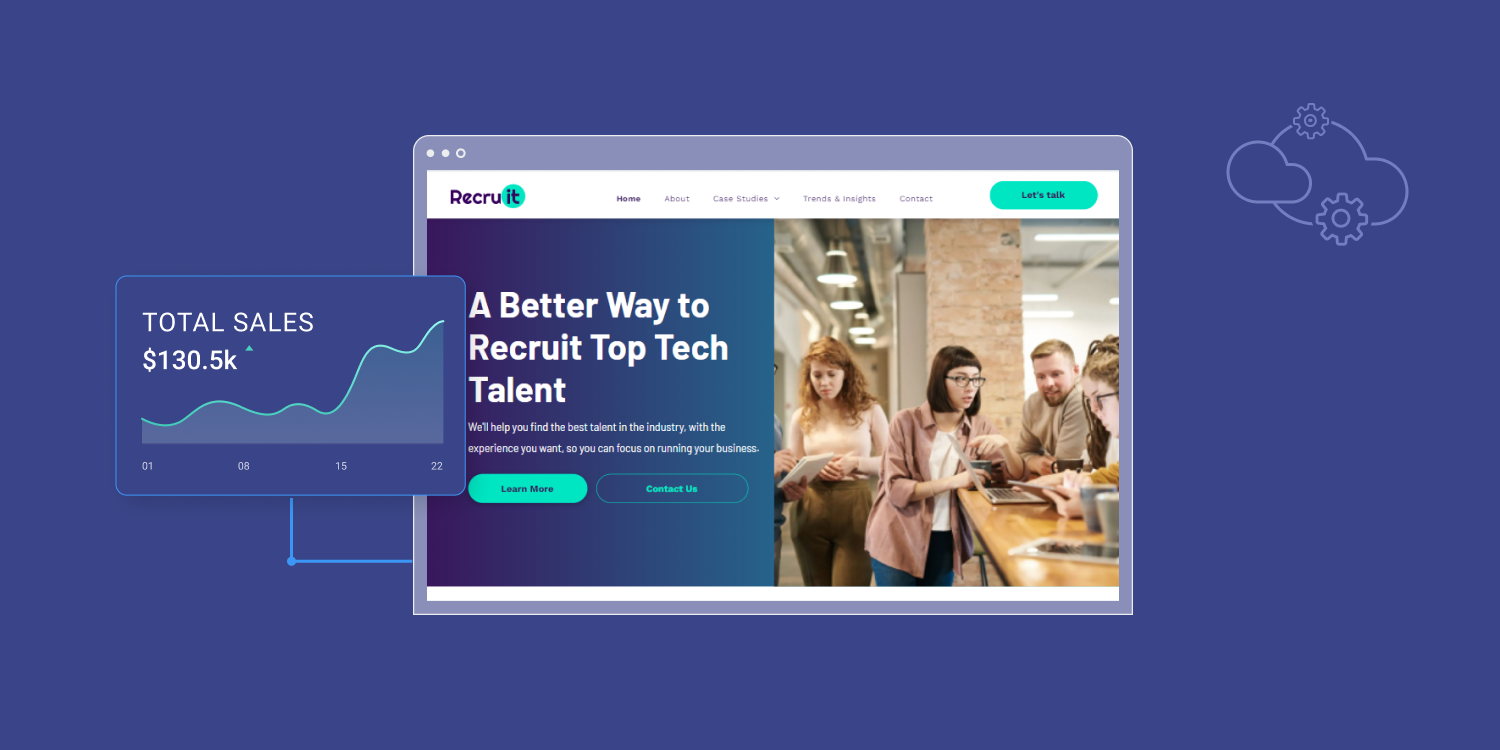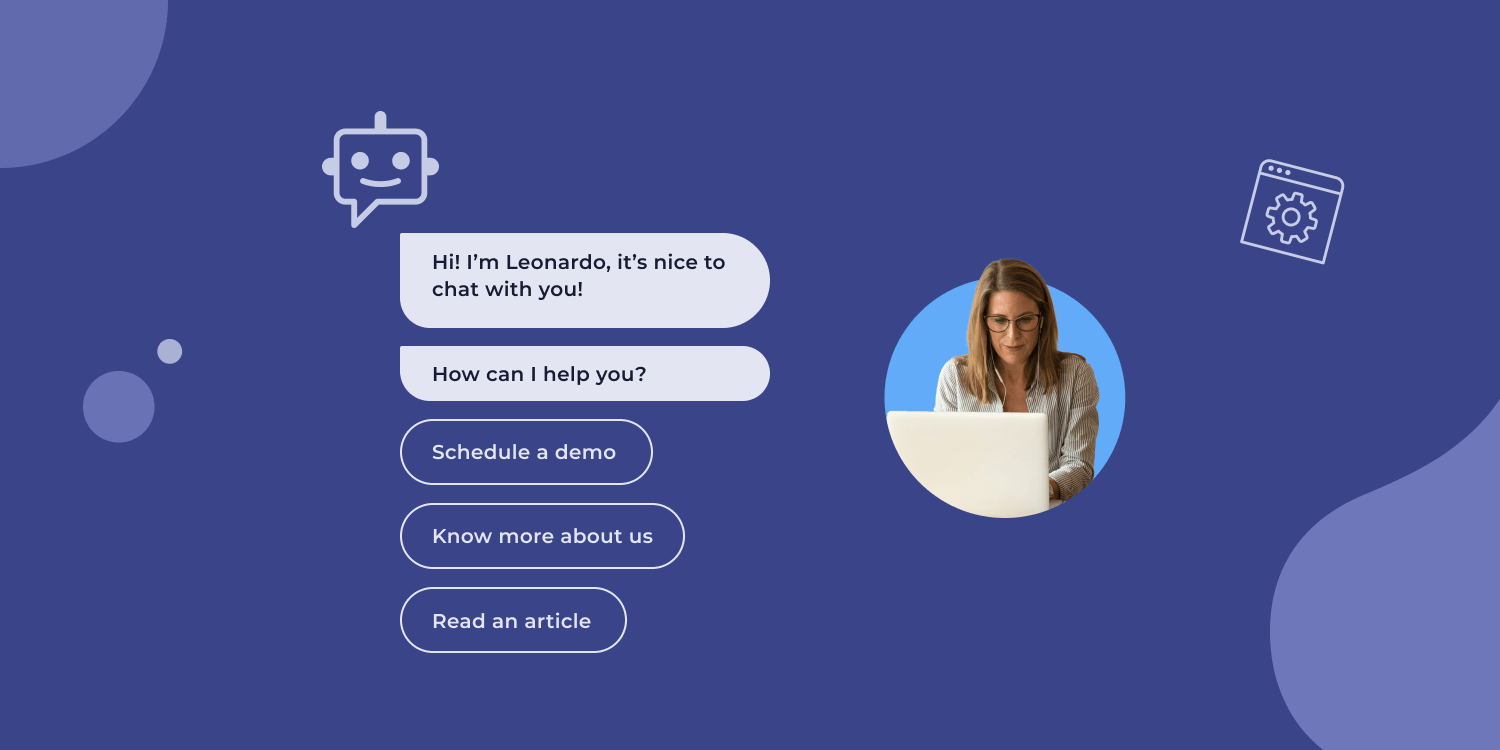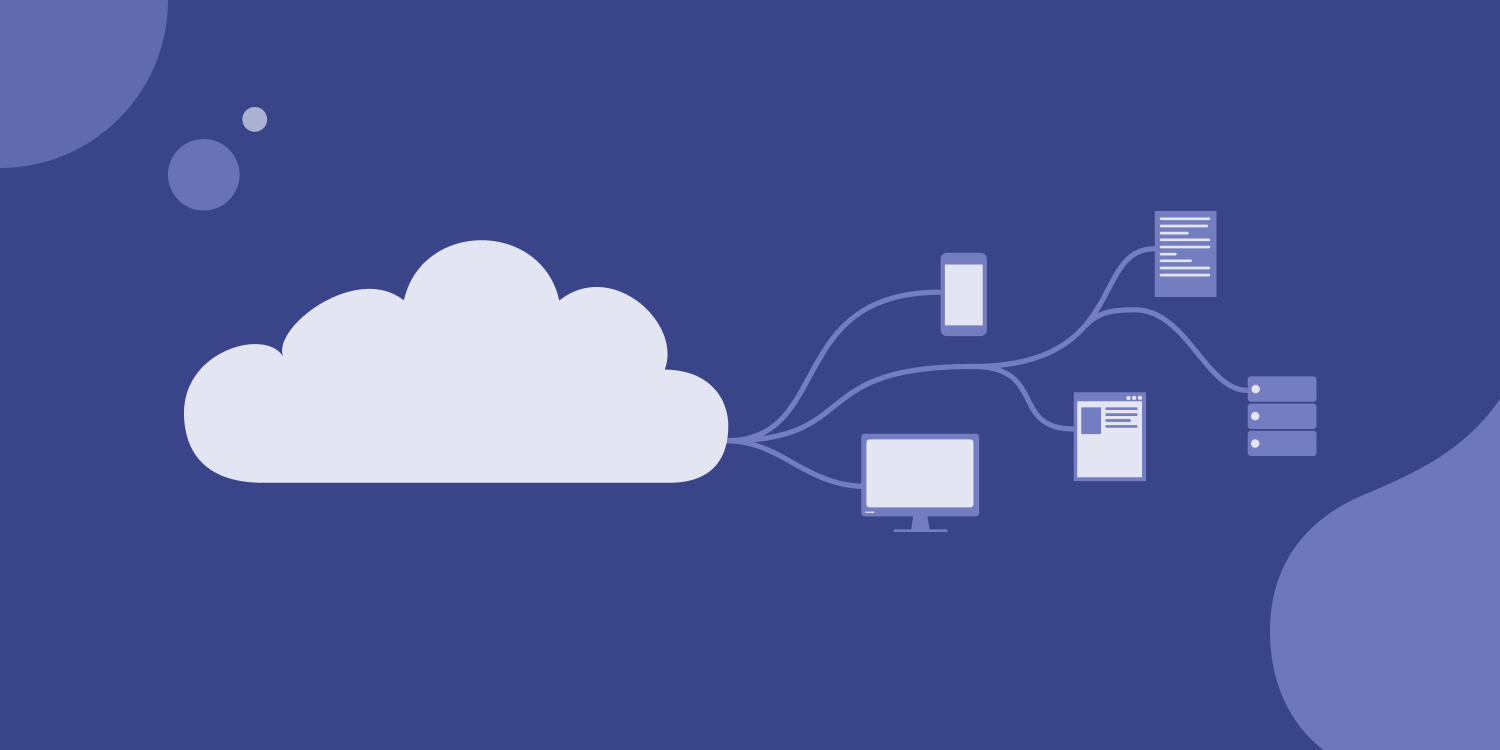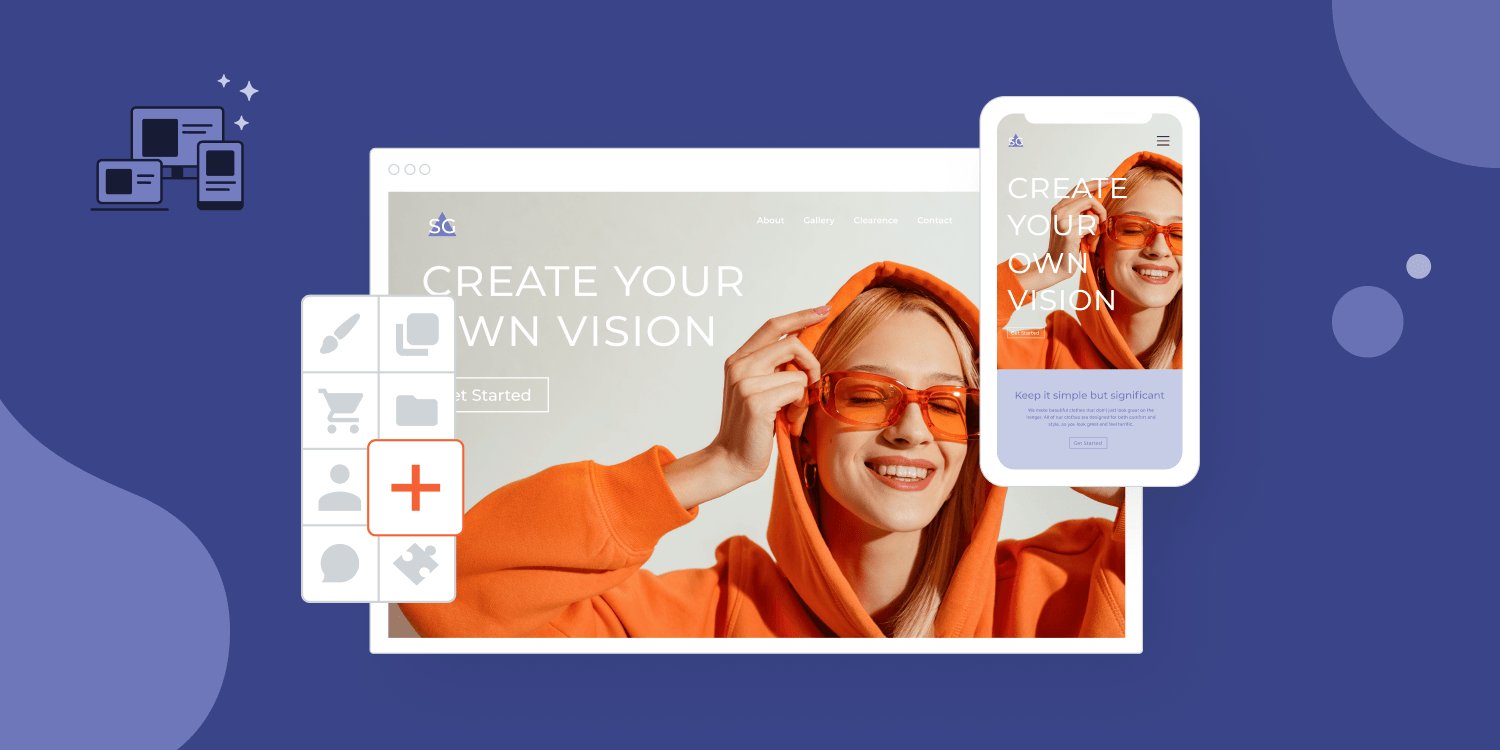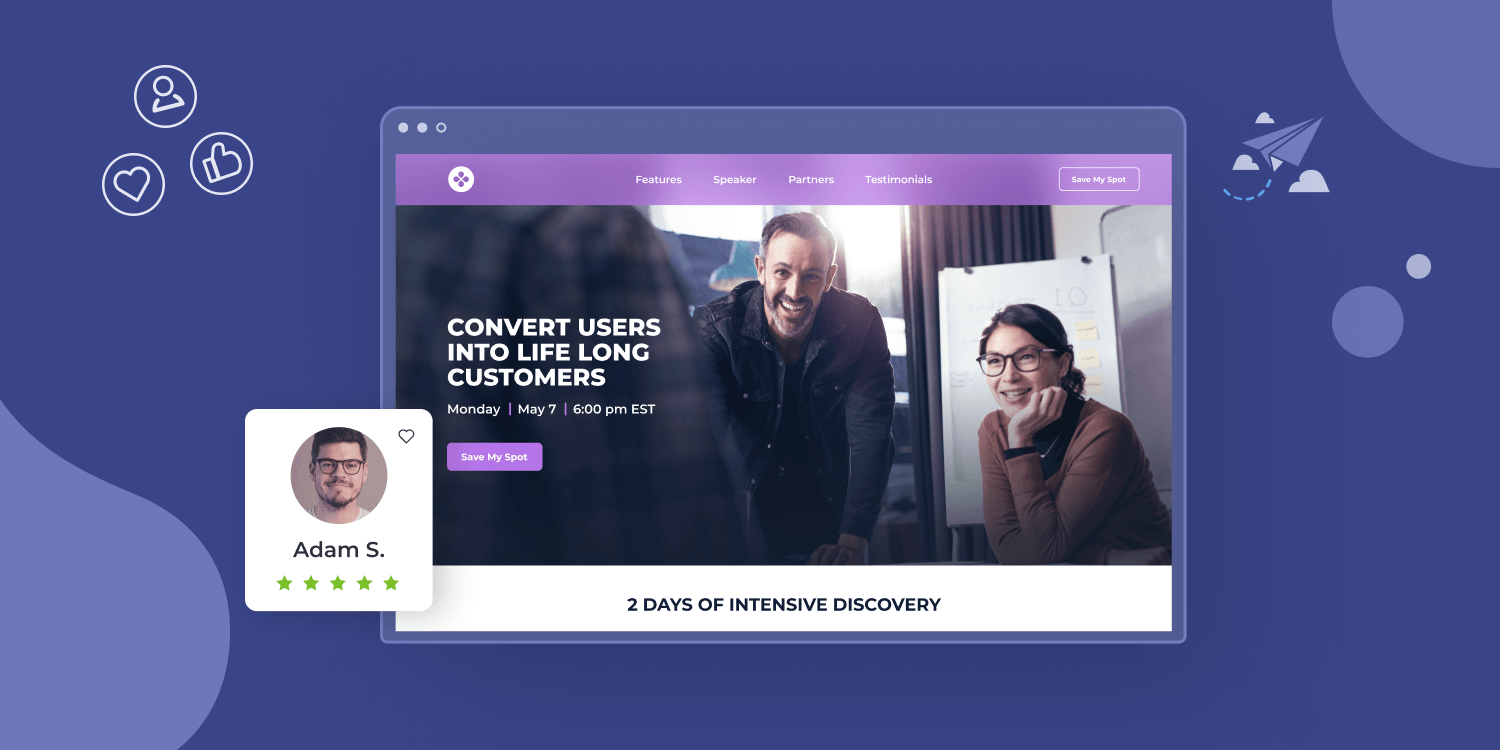Over the last few years, the
software-as-a-service (SaaS) industry has exploded with growth, paving the way for increased business efficiency and simplicity compared to the past. Just how much growth?
According to a recent study by
BMC, the SaaS market is growing by 18 percent per year and is expected to reach $171.9 billion in revenue by the end of 2022. This high-velocity growth has mainly been driven by users' desire to increase automation and SaaS solutions' constant innovation.
SaaS platforms have already done an excellent job of disrupting the way businesses operate in a good way, but what can your SaaS solution do to stay ahead of the pack? This post will discuss the top six trends for SaaS platforms in 2022 and how you can take advantage of them in your own environment.
Let’s begin.
1. ARTIFICIAL INTELLIGENCE AND MACHINE LEARNING
For our first SaaS trend, we will talk about artificial intelligence and machine learning. Artificial intelligence and machine learning have taken the SaaS industry by storm due to increasing productivity, efficiency, and automation of redundant tasks. Despite being used interchangeably, there are a few key differences between AI and machine learning.
Artificial intelligence is typically defined as technology that powers a machine to simulate human behavior. In contrast, machine learning is a subset of AI that allows devices to learn from past data with no additional programming required. AI, in general, aims to act as an intelligent technology that, like humans, can solve complex issues. This SaaS trend sounds like the Terminator, right?
Unlike the machines in the Terminator, adding AI and machine learning technology to your SaaS solution’s existing capabilities works for the good of the human race.
One example of an AI-based solution that adds tremendous upsell value for SaaS platforms that sell websites to their customers is a chatbot. While chatbots have been around for a few years now, these automated communication tools are becoming more advanced.
As many end-consumers prefer to solve most of their customer service-related issues without ever having to speak to a rep, adding a chatbot to your website offering can increase value exponentially for both your users and their customers, providing a better customer experience for all parties involved.
Interested in adding a chat feature to your website to take advantage of this SaaS trend? Learn more about Duda’s latest app:
Amy Chatbot.
2. White Labeling
Another recent development and trend in the SaaS world is the concept of white-labeling. Ultimately white-labeling gives SaaS platforms the ability to offer their services to customers without their branding getting in the way of their users' experiences.
Besides offering white-labeled services to their end-users, another popular way that SaaS platforms are taking advantage of white-labeling is by partnering with other white-labeled SaaS solutions and integrating those solutions through APIs. One of the main benefits of using this method is to offer customers additional functionality without dedicating the resources to building a new offering.
By partnering with a white-labeled SaaS solution, SaaS platforms can keep their brand identity consistent, creating a cohesive experience that appears to be built in-house.
For platforms interested in utilizing this SaaS trend, partnering with a
white-labeled website building platform like Duda is one of the best places to start. As a white-labeled solution, Duda offers SaaS platforms the unique opportunity to empower their users with a robust digital presence while giving users a consistent, familiar experience they are accustomed to.
3. Vertical SaaS
While the term software as a service has been around since the 1960s, the most recent evolution to the SaaS industry has been the emergence of vertical SaaS solutions. Unlike horizontal SaaS platforms that focus on serving a wide range of customers across various industries, vertical SaaS platforms take a new approach by offering services that cater only toward niche industries.
To give you a better understanding about the difference between vertical and horizontal SaaS platforms, it’s best to turn to some examples of companies in each SaaS segment.
A great example of a horizontal SaaS company is
Slack. Slack provides an instant messenger like platform that enables teams of all sizes, industries, and niches to effectively communicate with each other across all time zones. Since Slack doesn’t focus on any particular industry, this would be considered a horizontal approach.
On the other hand, a SaaS platform like
Toast provides a restaurant point of sales and management system that was built specifically for restaurants to run their business. This would be considered a vertical SaaS platform because of the niche focus on providing an all-in-one solution for restaurants.
So why is vertical SaaS exploding in the SaaS world? Some of the main reasons why include:
- Higher conversion rates for niche markets
- Lower acquisition costs than horizontal SaaS solutions
- More compliance available for industry specific standards
- Higher customer retention rates due to niche focus for specific industries
As a player in the vertical SaaS industry, Duda caters our website building capabilities toward digital agencies and vertical SaaS providers that need to build websites at scale for their customers, avoiding marketing our solutions to the wider SMB market.
For more information on how Duda can assist vertical SaaS platforms with selling websites to their customers check out our recent blogs:
4. Mobile-First Approach
Made popular by the release of the first iPhone in 2007, smartphones have forever changed how the world accesses the internet.
In a recent article published by
CNBC, almost three-quarters or 72.6 percent of all internet users will access the web solely by their smartphones by 2025. So if you find yourself primarily searching the internet with your smartphone, you are not alone.
Why does this matter for SaaS platforms? Because most of the world’s population uses their smartphones to search the internet, naturally, customers of SaaS platforms expect the same type of user experience for the SaaS products they purchase. For SaaS providers, this means creating mobile-friendly solutions and allowing users to access the entirety of their platform from their phones.
A great example of how SaaS platforms can cash in on this SaaS trend is by offering responsive websites to their customers. Responsive websites automatically adjust a website’s layout to fit the device that an end-user is on.
Since we already know that many people access the web through their mobile devices, this becomes extremely important for SaaS platforms offering websites to their customers.
To simplify creating responsive websites, SaaS platforms can partner with a website building platform like Duda that takes care of this automatically.
For more information on utilizing this SaaS trend for creating
responsive websites with Duda, check out this free course from Duda University.
5. LOW CODE AND NO CODE
Often used interchangeably, the SaaS trend low code and no code have gained massive popularity in the SaaS community over recent years.
Low code, which refers to SaaS platforms or solutions that require little coding skills, usually comes equipped with drag and drop capabilities that help minimize writing extensive lines of code. While closely related to its cousin low code, no code takes this approach to the next level by allowing you to create applications or other coding-heavy projects without writing a single line of code.
Some of the main reasons why low code and no code SaaS platforms have gained traction is due to:
- Higher Team Productivity
- Reduced Development Costs
- Better Customer Experiences
- Ability to Make Changes Quickly
Like many other SaaS platforms, Duda has fully embraced the low code movement, taking advantage of this SaaS trend. Duda’s
website builder comes equipped with Dynamic Pages, Internal Collections, and a drag & drop editor to make building websites at scale simpler.
Check out our recent blog to dive deeper into
low code and no code website builders.
6. EMPHASIS ON REDUCING CHURN AND INCREASING RETENTION
As more businesses turn to SaaS platforms to increase efficiency, add new offerings, and better manage their day-to-day operations, many SaaS companies are turning their attention to reducing churn and increasing retention for our last SaaS trend.
Historically, churn has been a problem for SaaS platforms, especially horizontal SaaS solutions. Since many SaaS platforms rely on having ongoing revenue from their clients in the form of subscriptions, a lost customer can be a huge loss of not only current revenue, but future revenue for SaaS platforms.
To add to the churn problem, in recent years, the cost to
acquire new customers has significantly increased by around 60 percent. For this reason, a great deal of SaaS platforms have been focusing their efforts on increasing customer value through new partnerships, packages, and new product offerings.
SaaS platforms can take advantage of this trend by increasing the value of their existing offering by partnering with a website building solution like Duda. Adding a website offering can benefit vertical SaaS providers across various industries by creating a stickier offering for users.
Since every business needs a high-performing website to be found online, what better way to increase retention than through a website offering?
You can learn more about improving your
SaaS customer experience to increase retention here.
Conclusion
The future of the SaaS industry is ripe for continued success. Undoubtedly these SaaS trends will impact how many SaaS platforms position themselves as leaders in 2022.
Contact the Duda team today to learn how you can take advantage of the top six SaaS trends of 2022 by partnering with Duda.
Related Posts
By Ilana Brudo
•
January 8, 2026
SaaS can add a new revenue stream by embedding a white-label website builder. Follow the Crawl, Walk, Run strategy with Duda for fast, de-risked integration.
By Arnoldo Lopez
•
December 9, 2025
Unlock high-velocity development by integrating the Duda API with your AI assistant using the Model Context Protocol (MCP). Learn to build a functional Duda MVP from a simple prompt.
By Paul Posea
•
October 28, 2025
Discover how SaaS companies are integrating embedded website builders to boost user retention, enhance marketing, and unlock new revenue streams.
Show More



